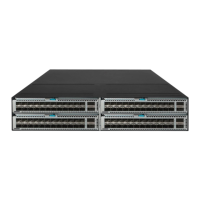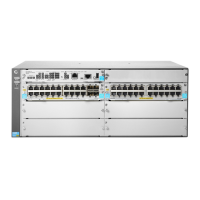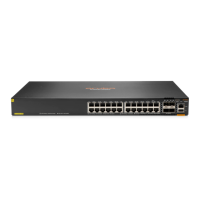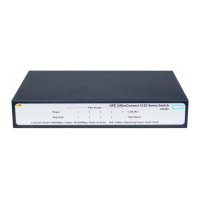228
Step Command Remarks
1. Enter system view.
system-view
N/A
2. Create a traffic class and
enter its view.
traffic classifier
classifier-name [
operator
{
and
|
or
} ]
By default, no traffic
classes exist.
3. Configure CVLAN match
criteria.
• Match CVLAN IDs:
if-match customer-vlan-id vlan-id-list
• Match 802.1p priority:
if-match customer-dot1p
dot1p-value&<1-8>
N/A
4. Return to system view.
quit
N/A
5. Create a traffic behavior
and enter its view.
traffic behavior
behavior-name
By default, no traffic
behaviors exist.
6. Configure a priority
marking action for SVLAN
tags.
• Replace the priority in the SVLAN tags of
matching frames with the configured
priority:
remark dot1p dot1p-value
• Copy the 802.1p priority in the CVLAN
tag to the SVLAN tag:
remark dot1p customer-dot1p-trust
N/A
7. Return to system view.
quit
N/A
8. Create a QoS policy and
enter its view.
qos policy
policy-name
By default, no QoS
policies exist.
9. Specify the traffic behavior
for the traffic class in the
QoS policy.
classifier
classifier-name
behavior
behavior-name
N/A
10. Return to system view.
quit
N/A
11. Enter Layer 2 Ethernet
interface view.
interface
interface-type interface-number N/A
12. Configure the port to trust
the 802.1p priority in
incoming frames.
qos trust dot1p
By default, a port does
not trust the 802.1p
priority in frames.
This step is required if
the
remark dot1p
command is configured.
It is optional if the
remark dot1p
customer-dot1p-trust
command is configured.
13. Enable QinQ.
qinq enable
N/A
14. Apply the QoS policy to
the inbound direction of
the port.
qos apply policy
policy-name
inbound
N/A
For more information about QoS policies, see ACL and QoS Configuration Guide.
Displaying and maintaining QinQ
Execute display commands in any view.

